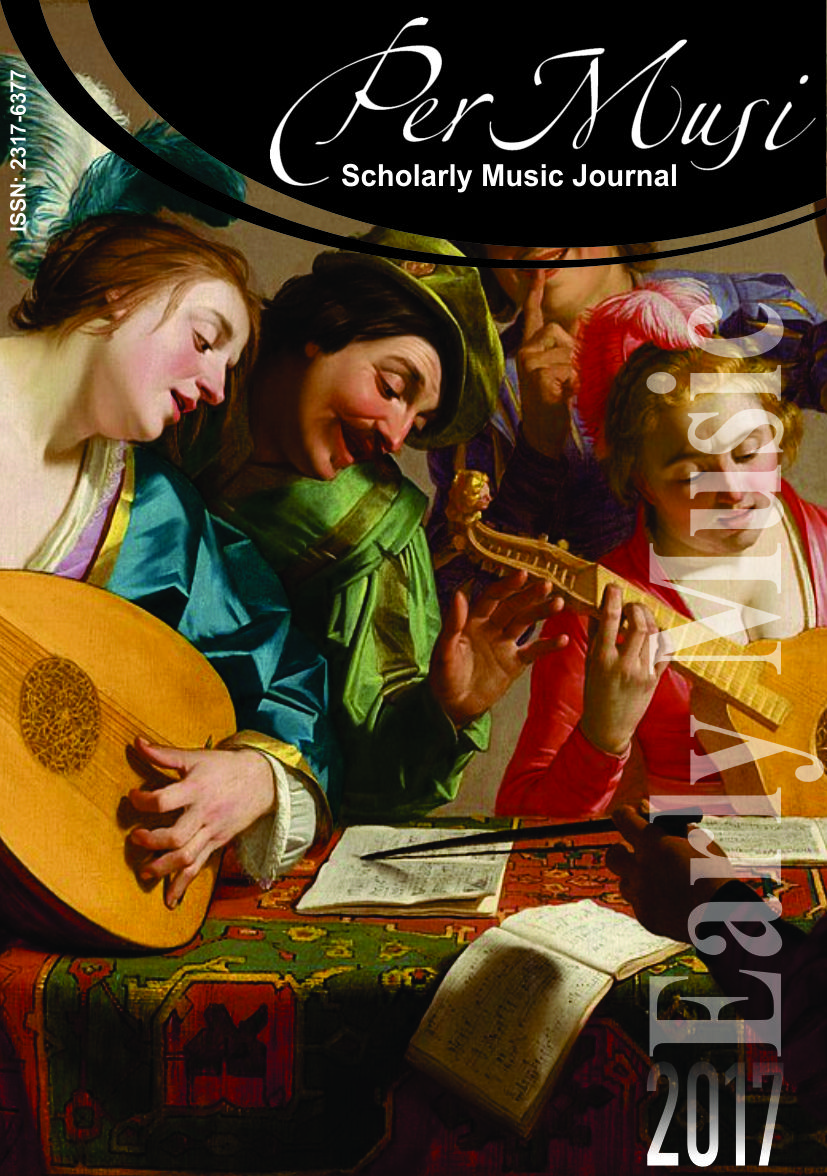Estética vocal na transição da Renascença para o Barroco: revisão de fontes historiográficas sobre o treinamento vocal e ornamentação
Palavras-chave:
tratados sobre voz, estética vocal na música antiga, voz na renascença e protobarroco, ornamentação vocalResumo
As fontes historiográficas e secundárias nos ajudam a compreender melhor parte da estética vocal do final da Renascença e início do Barroco. Nelas fica claro a influência do texto literário – seu significado e dicção –, da impostação natural da língua materna e do uso de ornamentação na construção do ideal sonoro vocal do período. Após examinarmos algumas destas fontes, concluímos que a homogeneização de registros não fazia parte deste ideal sonoro, que a ornamentação vocal era extremamente valorizada no período e que a língua materna influenciava sobremaneira a sonoridade e a utilização do aparato vocal no canto.
Downloads
Publicado
Edição
Seção
Licença

Exceto onde está indicado, o conteúdo neste site está sob uma Licença Creative Commons - Atribuição 4.0 Internacional.












